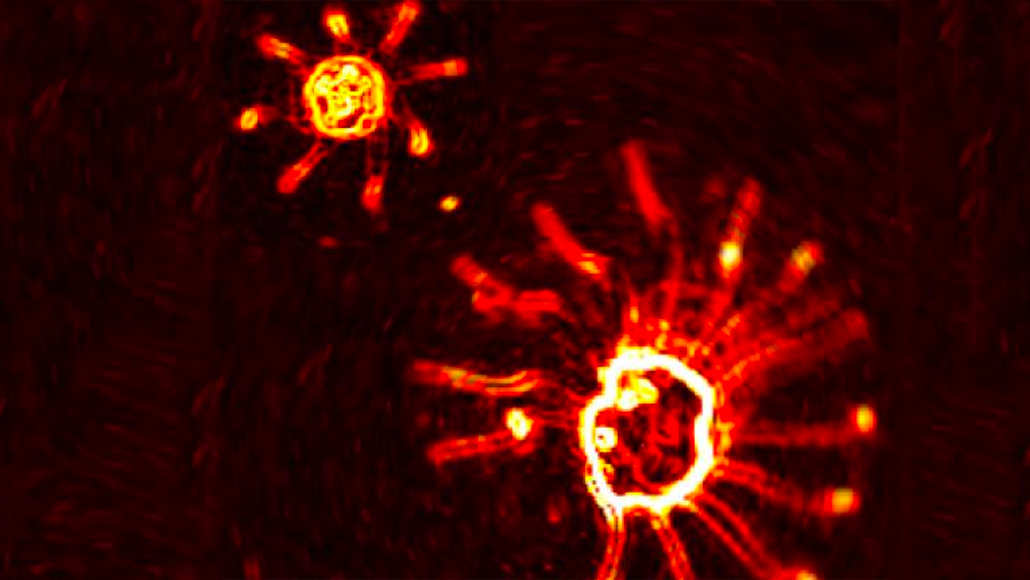Algae use flagella to trot, gallop and move with gaits all their own
Microalgae may be just single cells, but they can coordinate eight or 16 limbs

With no brain or nervous system, one-celled algae can coordinate their sunbursts of threadlike flagella in graceful gaits.
K.Y. Wan, Raymond E. Goldstein
A microscopic speck of green algae can trot like a horse. Or gallop. Biophysicist Kirsty Wan compares the gaits of creatures large and small.
Moving diagonally opposite limbs, or flagella in this case, in unison — that’s a trot, Wan says. Her lab, at the University of Exeter in England, is working on the conundrum of how single-celled creatures, with no nervous system or brain, coordinate “limbs” to create various gaits. Some of those movements get far trickier than trots and gallops.
Her work echoes that of 19th century photographer Eadweard Muybridge, who used a then-novel imaging technique to reveal hoof positions obscured in the blur of a horse galloping. Wan now creates Muybridge moments for microalgae. Using a range of microscopy analytics on what she calls “my private collection of weird algae,” Wan and colleagues have documented microalgae that coordinate from four to 16 flagella.
In some four-limbed cells, flagella can move in neighborly pairs, pulling back in a sort of double-vision breaststroke. To these microscopic critters, water feels thicker than the splashy stuff that giant humans easily swish aside. So the algal breaststroke has little glide. It’s more like a slog through molasses.
Wan looked hard for microalgae with eight flagella and found three species. One, Pyramimonas octopus, has a gait unlike any Muybridge ever saw. Wan calls it rotary breaststroke. Flagella across from each other in the array of eight will curl in for the stroke as their neighbors are uncurling a few beats behind.
P. octopus is a twitchy microbe that goes through “shocks,” Wan says. An alga swims along, then “like a knee-jerk reaction,” it changes direction, though she can’t see what spooks it. In comparison, when she watches a two-flagella Chlamydomonas species, “sometimes it twirls; sometimes it spins,” but there’s nothing so dramatic as the abrupt pullback.
The trickiest example she’s seen may have been lost to science. Wan once grew the Arctic’s P. cyrtoptera, the only microalgal species she knows of with an array of 16 flagella. Sometimes opposite pairs of flagella stroke in unison as the motion ripples around and around the array in a gait she calls a “wave.” Her colony died, however, and so did her supplier’s. “I hope it still exists somewhere in the world,” she says. “Otherwise, I might have … taken the last footage.”






